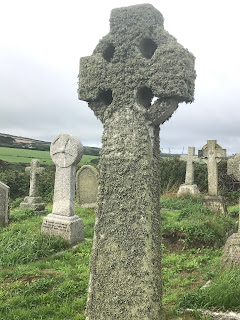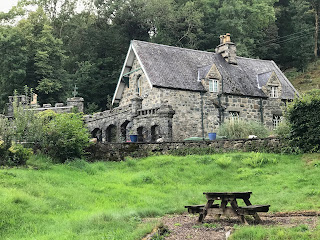It is very nice. I was glad to get some respite from cooking in a different kitchen every few days without recipes, any spices but salt and pepper and a jar of fines herbs I bought. Each day we had to buy just enough food to feed us for a few days. We had to eat it up or carry it in our car to the next destination. I enjoyed the freedom to eat when we wanted and what we wanted. But it was very limited.
But hotel living has its limitations, too. First discovery: in Plymouth we couldn’t find a restaurant open for dinner before 5 pm. They closed at 3 then opened again at 5. It was easy to find burgers and fish and chips. Salads and vegetables were either limited or non-existent. Today we enjoyed fish and chips and mushy peas for lunch—something we had fond memories of from our 2 earlier trips to England. They were very good.
We do have 2 chairs in our room. We have learned from earlier travels in the US that many hotel/motel rooms have only 1 chair and we have to ask for a second one. Obviously, they don’t expect you to spend much time in your room. But we do. We can only walk, sight-see, explore museums, and shop for so many hours a day. We find we need down time and I need to blog.
Most of our National Trust cottages were in rural areas where there were walking trails through stunning landscapes. We took picture after picture of rolling green fields with stone or hedgerow fences and sheep and cattle. Often we saw streams and waterfalls. Now we are in a city, not in the country. I miss seeing sheep in the fields and green everywhere. In Plymouth we can do plenty of walking. But we see city streets, busy shopping lanes, cobblestone streets and sidewalks. Since Plymouth faced devastating bombing during World War II, most of the old buildings are gone but we do see some. Our hotel was built in 1863.
We hadn’t done our laundry for over a week, hoping the hotel would have a laundry room. It doesn’t. We considered giving them the laundry to do—that is until we filled out the laundry sheet and found it would cost 58 pounds or more to wash and dry what we needed done. Today we went searching for a laundromat and found one only about a 10 minute walk away. Tomorrow we will take the clothes there and pick them up 2 hours later—for maybe 10 pounds. It isn’t a do-it-yourself laundry but they will wash, dry and fold it for us.

















































